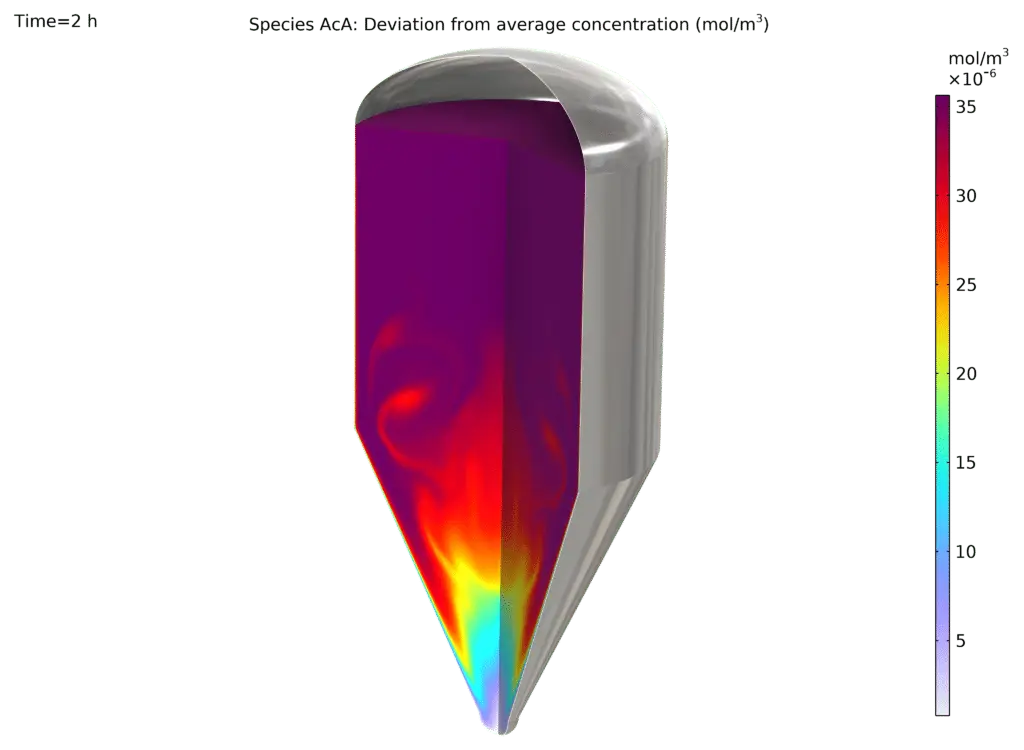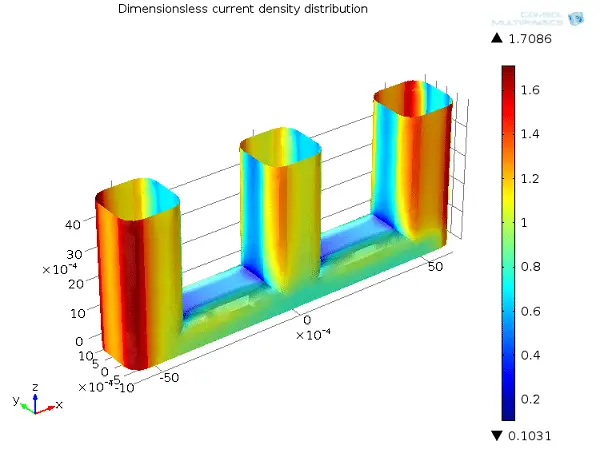Chemical Engineering & General Electrochemistry
- Taught by Juan Manuel Paz García
- This course is part of the following academic programs:
Optimization of chemical reactors, filtration equipment, mixers and other related processes is easily performed with the Chemical Reaction Engineering Module. This module is useful for engineers and scientists who work, for example, in chemical, process, power, pharmaceutical, polymer and food industries, etc.
The Chemical Reaction Engineering Module contains tools to simulate matter transport and heat transfer together with arbitrary chemical kinetics in all kinds of environments: gases, liquids, porous media, on surfaces and within solid phases, or combinations of all of them. It provides physical interfaces to define material transport in dilute and concentrated solutions or mixtures through convection, diffusion and ionic electromigration of an arbitrary number of chemical species. The physics interface for defining chemical reactions is straightforward since chemical formulas and equations are written essentially as we would write them on paper.
This course comprises chemical reaction engineering and thermodynamics. We list and describe in detail the physics interfaces corresponding to simulation in the field of chemical reaction engineering: the Reaction Engineering interface and the Chemistry interface. The description will be accompanied by the theoretical foundations on which each simulation interface is based, including the fundamental concepts, methods and tools. We also discuss at this point the different multiphysics couplings that can appear in combination with chemical reaction kinetics.
The content of this course includes an introduction to electrochemistry along with the different models of current distributions, specific studies and interfaces and applications.
After a brief general introduction to electrochemistry and electrochemical reactions, the physical interfaces corresponding to primary, secondary and tertiary current distributions are listed and described in detail. The latter will be discussed also considering the different cases of electroneutrality, water-based and with supporting electrolytes.
We then describe some physical interfaces and studies that serve to model more specific electrochemical analyses and phenomena, such as electroanalysis, cyclic voltammetry and electrophoretic transport.
Finally, we model different electrochemical systems and phenomena using the tools studied in the course, such as electrolysis, electrodialysis, electrochemical sensors, wastewater treatment, seawater desalination, bioelectrochemistry, etc.
- Chemical Engineering
- Introduction to chemical reaction engineering.
- Fundamental concepts, methods and tools for modeling chemical reactions.
- The chemical reaction engineering interface.
- Generation of space-dependent models.
- The chemistry interface.
Image made using the COMSOL Multiphysics® software and provided by courtesy of COMSOL.
- Modeling General Electrochemistry
- Introduction to electrochemistry.
- Kinetics of electrochemical reactions.
- Interfaces for primary and secondary current distributions.
- Tertiary current distribution interfaces.
- Electrochemical Analysis and Applications
- Electroanalysis.
- Cyclic voltametry.
- Electrophoretic transport.
- Applications.
Image made using the COMSOL Multiphysics® software and provided by courtesy of COMSOL.

